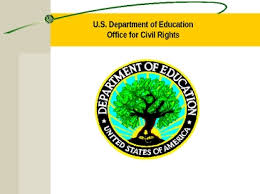Education Department Reverses Course on Prohibition Against Incentive Compensation Based on Retention and Graduation; Clears Way for Graduation Rate and APR Based Bonuses in Coaching Contracts
November 30, 2015
On November 27, 2015, the United States Department of Education announced a reversal of its previously existing prohibition against the payment of incentive compensation based on students’ program completion or graduation rates. The announcement follows two successive federal appeals court decisions, in 2012 and 2014, that the Department had not articulated a sufficient rationale for the prohibition. Although the announcement may impact retention and graduation based incentives on any number of fronts, it is of particular interest in the context of coaching and other athletics personnel employment contracts, where the prohibition had created significant uncertainty as to the permissibility of bonuses based on these metrics. As many will recall, on October 29, 2010, the Department adopted so-called Title IV “Program Integrity Rules.” Among other things, these new regulations eliminated previously existing regulatory safe harbors under the statutory prohibition against payment of incentive compensation for securing enrollment, and reversed a prior Department position that payments based on retention, degree completion or graduation were not considered impermissible enrollment-based compensation. In response to a comment questioning the applicability of the prohibition to the recruitment of student-athletes, the Department explained that:
[r]ecruitment of student-athletes is not different from recruitment of other students. Incentive compensation payments to athletic department staff are governed by the restrictions included in [the regulations]. If the payments are made based on success in securing enrollments or the award of financial aid, the payments are prohibited; however, the Department does not consider “bonus” payments made to coaching staff or other athletic department personnel to be prohibited if they are rewarding performance other than securing enrollment or awarding financial aid, such as a successful athletic season, team academic performance, or other measures of a successful team.
Based upon the Department’s statements that (a) incentivizing retention, degree completion or graduation is equivalent to prohibited incentivization of success in securing enrollments, and (b) athletic recruitment is no different than recruitment of other students, it appeared as though athletic department bonuses tied to student-athlete retention or program completion (e.g., graduation rate bonuses and/or Academic Progress Rate (APR)-based bonuses) would violate the new regulations. On March 17, 2011, however, the Department issued a “Dear Colleague” letter for the stated purpose of clarifying a number of new Title IV regulatory requirements, including the revised incentive compensation restrictions. Among other things, the “Dear Colleague” letter noted that:
[t]he preamble [to the new regulations] noted that bonuses for athletic personnel to reward performance other than securing enrollment or awarding financial aid, such as a successful athletic season, team academic performance, or other measures of a successful team, are permitted. . . . This statement merely reflects the fact that the payment of bonuses to athletic personnel is a common practice and is not typically viewed as incentive compensation based on recruitment of individuals as students, but at most may indirectly reward success in recruiting that small subset of individuals whose enrollment would benefit the institution’s athletic program.
Unfortunately, this “clarification” created more ambiguity than it resolved. For example, one could adopt a narrow reading of this explanation as standing for the proposition that payments based on successful on-field/on-court performance reward only indirectly success in recruiting, and that such bonuses (but not bonuses based on retention or academic progress) are therefore permissible. Alternatively, one could read the explanation more broadly as stating that athletic personnel may be paid bonuses based on retention or academic progress because they are not recruiting individuals for the purpose of increasing general student enrollment, but are instead recruiting individuals for the limited benefit of the institution’s athletics program. Under this broader reading, the incentive compensation prohibitions would not apply to athletic department staff insofar as they related solely to the recruitment of student-athletes. In the wake of the Dear Colleague letter, institutions adopted varying practices with respect to retention- or graduation-based incentive compensation in coaching and other athletics employment agreements. Some institutions proceeded cautiously, and restructured academic performance bonuses to be based on GPA or other clearly permissible metrics. Others, believing strongly in the merit of compensating personnel for keeping student-athletes in school and questioning whether the Department truly intended to prohibit this practice, retained graduation rate and APR-based bonus structures. Thankfully, the Department’s November 27 announcement removes any remaining uncertainty in this regard, and clearly supports the use of such bonus structures, as well as retention- or graduation-based compensation in other contexts. The Department’s announcement does not change other aspects of the continuing prohibition on paying commissions, bonuses or other forms of incentive compensation based directly or indirectly on securing enrollments or financial aid. Among other things, the Department expressly refused to alter its prohibition on compensation tied to minority enrollments, which had also been questioned in the court decisions referenced above, stating that the Program Integrity Rules bar compensation based on the number of students enrolled, “irrespective of the student’s minority or other status and irrespective of whether the goal of the recruiters is to increase diversity.”


 On April 24, the Department of Education’s Office for Civil Rights (“OCR”) issued new
On April 24, the Department of Education’s Office for Civil Rights (“OCR”) issued new